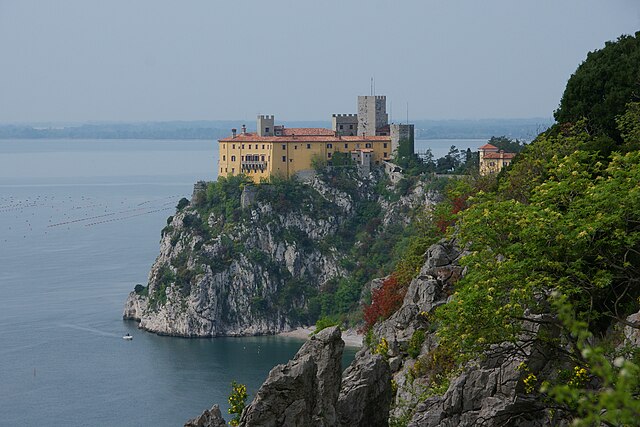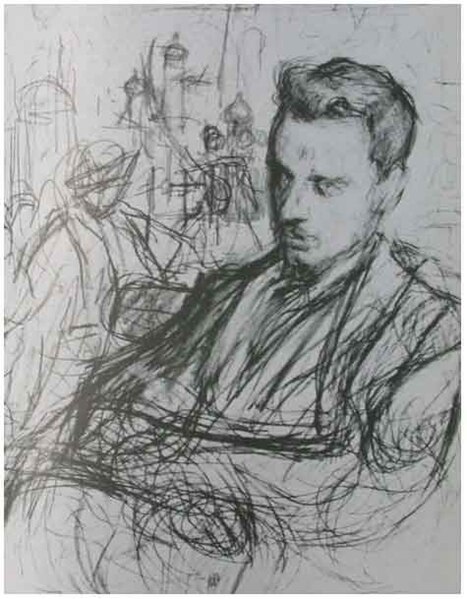René Karl Wilhelm Johann Josef Maria Rilke, known as Rainer Maria Rilke, was an Austrian poet and novelist. Acclaimed as an idiosyncratic and expressive poet, he is widely recognized as a significant writer in the German language. His work is viewed by critics and scholars as possessing undertones of mysticism, exploring themes of subjective experience and disbelief. His writings include one novel, several collections of poetry and several volumes of correspondence.
Rilke in 1900
Paula Modersohn-Becker (1876–1907), an early expressionist painter, became acquainted with Rilke in Worpswede and Paris, and painted his portrait in 1906.
Duino Castle near Trieste, Austria, was where Rilke began writing the Duino Elegies in 1912, recounting that he heard the famous first line as a voice in the wind while walking along the cliffs and that he wrote it quickly in his notebook.
Château de Muzot in Veyras, Switzerland, was where Rilke completed writing the Duino Elegies in "a savage creative storm" in February 1922.
The Duino Elegies are a collection of ten elegies written by the Bohemian-Austrian poet Rainer Maria Rilke. He was then "widely recognized as one of the most lyrically intense German-language poets", and began the elegies in 1912 while a guest of Princess Marie von Thurn und Taxis at Duino Castle, on the Adriatic Sea. The poems were dedicated to the Princess upon their publication in 1923. During this ten-year period, the elegies languished incomplete for long stretches of time as Rilke had frequent bouts with severe depression—some of which were related to the events of World War I and being conscripted into military service. Aside from brief periods of writing in 1913 and 1915, he did not return to the work until a few years after the war ended. With a sudden, renewed burst of frantic writing which he described as a "boundless storm, a hurricane of the spirit"—he completed the collection in February 1922 while staying at Château de Muzot in Veyras, Switzerland. After their publication in 1923, the Duino Elegies were soon recognized as his most important work.

Title page of the first edition
Rilke began writing the first and second elegies at Duino Castle, near Trieste, Italy, after hearing a voice in the wind while walking along the cliffs.
Rilke completed the Duino Elegies at Château de Muzot in Veyras, Switzerland, in a "boundless storm" of creativity in February 1922.
Rilke in a sketch by Leonid Pasternak






